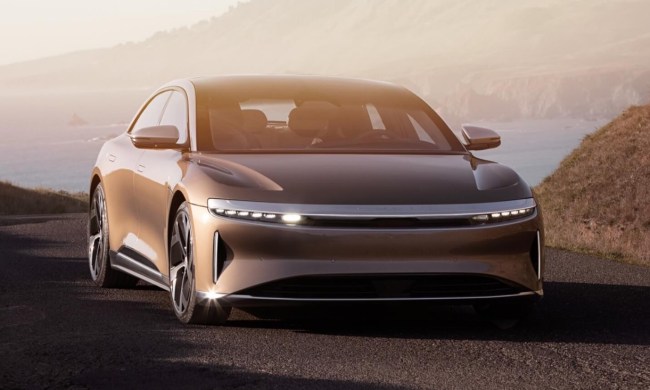Even with a myriad of supercars and high-profile debuts at its back, Honda’s press conference at the 2015 New York Auto Show may have stolen the show. And no, that’s not an April Fool’s joke.
The brand unveiled a new Civic Concept at the event, one that showcases a new design language for the model. Dressed in Nickelodeon-inspired green paint (which will indeed be a production color), the Concept rides on a lower, wider, but most importantly global platform that will underpin every 10th-generation Civic made. That includes sedan, coupe, five-door hatch, Si, and Type R models.
As a cherry on top, every single one of those cars will eventually see American shores, starting with the sedan in fall, the coupe in winter, and hatchback/performance variants soon after.
That’s right, VTEC worshipers: the beloved Civic Type R will finally, finally be available in the U.S.
Frequently referred to in New York as a “game-changer,” the Concept’s design is aggressive and eye-catching, injecting some serious attitude into the long-running compact car.
Speaking of injection … as we speculated last month, the next-generation Civic will equip a 1.5-liter VTEC Turbo engine in North America. Power output wasn’t specified, but the Earth Dreams powerplant will bolt up to either a six-speed manual transmission or a CVT. Clearly, this ain’t your average grocery getter.
Despite the Civic’s renewed focus on performance and sporty driving dynamics, Honda is targeting class-leading fuel economy and what the brand calls “near-luxury levels of cabin quietness and ride refinement.” The automaker’s ‘Honda Sensing’ safety package, which includes Lane Departure Warning, Forward Collision Warning, Multi-Angle Rearview Camera, Adaptive Cruise Control and Honda LaneWatch, will be offered as well.
“The new Civic will be, flat out, the most dynamic, the most technologically advanced and the most refined and stylish Civic we’ve ever made,” said John Mendel, Honda’s Executive Vice President. “In every way, this will be an epic Civic.”






